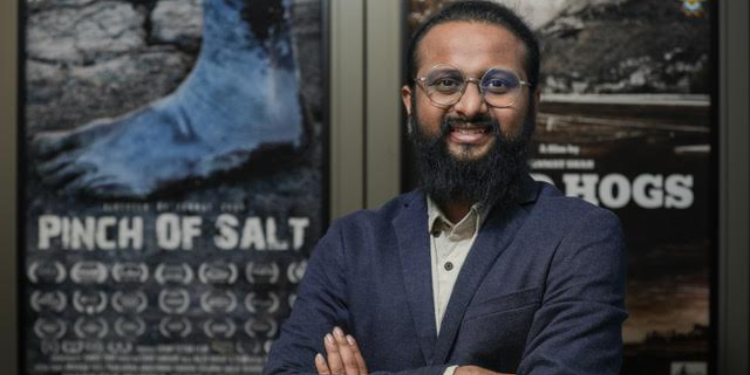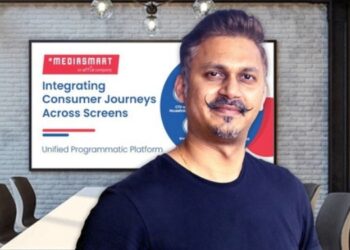Brands are transitioning from lengthy explainer narratives to shorter, non-intrusive advertising formats to align with the changing patterns of consumer interaction with brands. In parallel, filmmaking has emerged as a catalyst for creating some of the most captivating and innovative works that have become synonymous with brands and their identities over decades. The mutual influence between brands and filmmaking has led to the emergence of more purposeful narratives, buoyed by consumers who prioritise brand values over product price when making a choice.
This evolution is palpable in the storytelling landscape, which has become increasingly nuanced, socially conscious, and attuned to brand values. Brands have begun to craft narratives that focus on the practical application of their products, often challenging societal norms or championing narratives of a better world. An expanding array of brands now seeks to forge deeper connections with audiences through diverse mediums beyond the traditional 30-second commercial. By embracing formats such as full-length scripted narratives, documentaries, short films, and episodic programs, brand-funded filmmaking endeavours to become the very entertainment that audiences actively seek out.
In the early days of Indian advertising, commercials were primarily focused on showcasing product features and benefits. These ads were often formulaic, relying on catchy jingles and repetitive messaging to capture attention. However, as the medium of television gained popularity, advertisers began to recognize the potential of storytelling in creating memorable brand experiences.
An exemplary instance of evolution in advertising can be observed through Cadbury Dairy Milk’s journey, from the iconic “Asli Swaad Zindagi Ka’‘ campaign, depicting moments of joy and celebration shared over a chocolate bar, to their latest advertisement titled “Kuch Accha Ho Jaye, Kuch Meetha Ho Jaye”. This recent campaign sheds light on social asymmetry, aiming to bridge the gap between the affluent and the underprivileged. Cadbury, as a brand, has transitioned from merely portraying happiness and togetherness to addressing deeper societal disparities and seeking happiness within that context. Such a transformative shift exemplifies how consumers perceive brands when making split-second purchasing decisions, and how brands are increasingly prioritising socio-emotional connections to ensure enduring consumer loyalty. This form of storytelling, with its timeless impact, fosters strong brand retention across generations, appealing to consumers of all ages and backgrounds.
Similarly, the Fevicol series of advertisements, crafted under the creative lead of Piyush Pandey, ingeniously showcased the brand’s adhesive prowess through humorous and unconventional narratives. Whether it was the iconic “Fevicol Bus” commercial or the memorable “Egg” ad, these commercials captivated audiences with their witty storytelling and endearing characters, firmly solidifying Fevicol’s status as a household name. Transitioning from these iconic campaigns, Fevicol embarked on a socially impactful endeavour in 2021.
Against the backdrop of the COVID-19 pandemic, a myriad of innovations has surfaced, each playing a crucial role in the collective societal effort to combat the virus. Ranging from foot-operated sanitizers to scarves repurposed as masks, and the introduction of sanitizer wristbands, these innovations have significantly influenced public health and safety measures. In light of these developments, Fevicol, renowned as one of India’s most esteemed brands, has recently embarked on a timely initiative aimed at reinforcing the importance of adhering to social distancing guidelines.
Through a meticulously crafted social experiment, Fevicol conceptualised and executed a thought-provoking demonstration at a food court within a bustling mall. The primary objective of this experiment was to underscore the imperative need for social distancing, particularly in light of the ongoing surge in COVID-19 cases. The chairs were securely affixed to the tables, rendering them unusable. This clever manoeuvre by Fevicol effectively conveyed the lesson of social distancing to mall-goers, compelling them to confront the consequences of flouting these essential guidelines. By orchestrating this innovative social experiment, Fevicol not only imparted a valuable lesson to the public but also set a commendable example of adherence to the prescribed regulations in the ongoing battle against the virus.
In recent years, Indian advertising has witnessed a shift towards socially relevant campaigns that address pressing issues and advocate for positive change. One such campaign is the “Touch the Pickle” initiative by Whisper, which challenged menstrual taboos and encouraged women to embrace their periods with confidence. The campaign, featuring real stories of women breaking stereotypes, sparked conversations around menstrual health and empowerment.
Another impactful campaign is Nike’s “Da Da Ding,” which celebrated female athletes and challenged gender norms in sports. Directed by François Rousselet, the ad showcased the strength and determination of Indian women, inspiring a generation to pursue their athletic dreams without hesitation.
Hindustan Unilever Limited (HUL) launched its impactful CSR campaign, ‘Start A Little Good,’ which was conceived by Ogilvy. The campaign aimed to address crucial societal issues, with a particular focus on water conservation. Through compelling storytelling and a powerful social narrative, the campaign urged individuals to take small yet meaningful steps towards preserving water resources. By emphasising the collective responsibility we all bear towards environmental sustainability, HUL’s initiative struck a chord with audiences across demographics. Through thought-provoking visuals and emotive storytelling, the campaign not only raised awareness about the pressing issue of water scarcity but also inspired action and fostered a sense of community involvement in safeguarding this precious resource for future generations.
With the advent of digital media, brands have embraced innovative storytelling techniques to engage with online audiences. One standout example is Google India’s “Reunion” ad, which narrates the story of two friends separated by the India-Pakistan partition, who are reunited decades later with the help of Google Search. The emotional reunion resonated with viewers across borders, highlighting the power of technology in bringing people together.
Similarly, the Tanishq ad titled “A Wedding Called Ekatvam” celebrated the diversity of Indian weddings, showcasing various cultural traditions coming together to celebrate love and unity. Directed by Gauri Shinde, the ad received widespread acclaim for its inclusive message and heartwarming portrayal of relationships.
As Indian advertising continues to evolve, the role of filmmaking in driving purposeful narratives for brands will only grow in importance. With consumers demanding authenticity and meaningful storytelling, advertisers must embrace creativity and innovation to cut through the clutter and make a lasting impression.
The evolution of filmmaking in Indian advertising reflects a broader shift towards storytelling that resonates with audiences on a human level. From emotional narratives to socially relevant campaigns, iconic ads have shaped the way brands connect with consumers, leaving a lasting impact on the Indian advertising landscape. As brands continue to push the boundaries of creativity, the future of filmmaking in advertising holds endless possibilities for driving positive change and inspiring audiences around the world.
Authored by Tanmay Shah-Founder and CEO of FridayFictionFilms

















